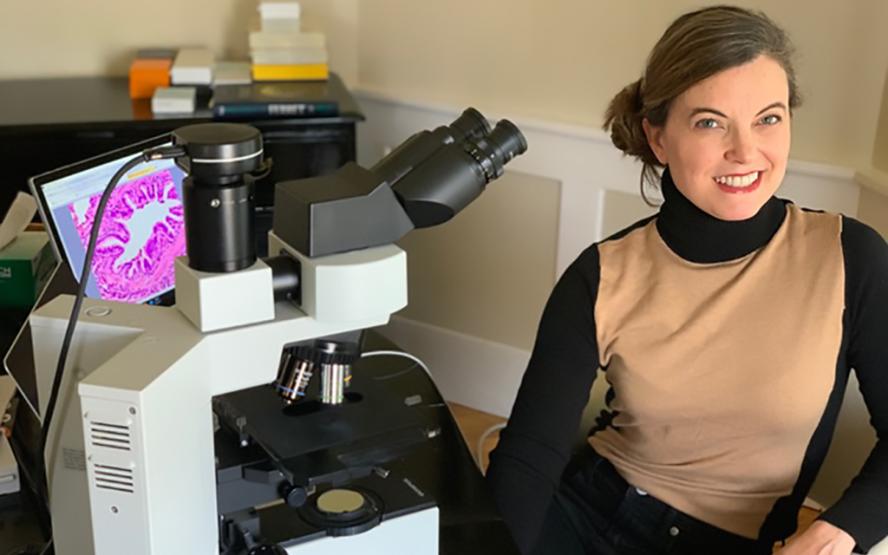-
About
- Leadership & Faculty
- News & Events
-
Academics
- Graduate
- Advanced Clinical Training
- Continuing Education
-
Student Life
-
-
Accommodations
- Our Campus
-
Accommodations
- Graduate Resources
-
-
Research
-
Hospitals & Clinics
- Emergency Care
- Hospital Services
-
Community Outreach
- Volunteer
How Does COVID-19 Interact with the Immune System?
Assistant professor Amanda Martinot discusses why she’s working with researchers to identify early events in the pathogenesis of COVID-19 using animal models.

Like most of us, the faculty and researchers at Cummings School have watched the COVID-19 pandemic develop and spread with a mixture of concern and curiosity.
While none of them were surprised to see a new virus spill over from animals to people, they still have lots of questions about how it’s infecting and affecting people worldwide—and what it will take to bring the U.S. and international outbreak under control.
We asked experts to share what questions about COVID-19 they’d most like to be able to answer in the months ahead.
Assistant professor Amanda Martinot is a veterinarian-scientist and board-certified veterinary pathologist specializing in animal models of infectious diseases of global health importance such as tuberculosis, HIV, and Zika virus. She is the primary pathologist for Cummings School’s discovery pathology service, an important partner to academic and industry researchers working on new therapies and vaccines for diseases such as COVID-19. She’s also on a research team that’s using a $250,000 award from Fast Grants to evaluate which animal models best reveal what the virus is doing in the body over the first seven days of infection with COVID-19.
“As a scientist, veterinarian, and pathologist, what keeps my mind buzzing is trying to understand what makes this virus different—whether you are talking about its remarkable infectiousness as compared with other coronaviruses or the way it differentially targets older adults,” said Martinot.
“Of course, we expect the elderly to have more pre-existing conditions and to be more susceptible to many respiratory viruses, such as influenza—but in most cases of the flu, the very old and the very young are more susceptible. This suggests that there is something different about the way SARS-CoV-2—the virus that causes COVID-19—interacts with the immune system.
Some of my ongoing work as part of a collaboration with physician, immunologist, and virologist Dan Barouch at Beth Israel Deaconess Medical Center is to try to identify early events in the pathogenesis of COVID-19 using animal models. Trying to understand this difference may help us identify the most susceptible of the super-susceptible and may allow us to identify novel targeted therapeutics that can be used early during the course of infection to prevent adverse outcomes.”
Read more responses in our “Special Report: Answers Needed About COVID-19” series from Janetrix Hellen Amuguni, Felicia Nutter, Marieke Rosenbaum, Jonathan Runstadler, Abhineet Sheoran, Charles Shoemaker, Sam Telford, Saul Tzipori, and Chris Whittier.
Department:
Dept. of Infectious Disease and Global Health